#1818
Text

Dark colored bird on a branch. Xanthornus purpurascens. Voegel, aus Asien, Africa, America und Neuholland. 1818.
Internet Archive
232 notes
·
View notes
Text
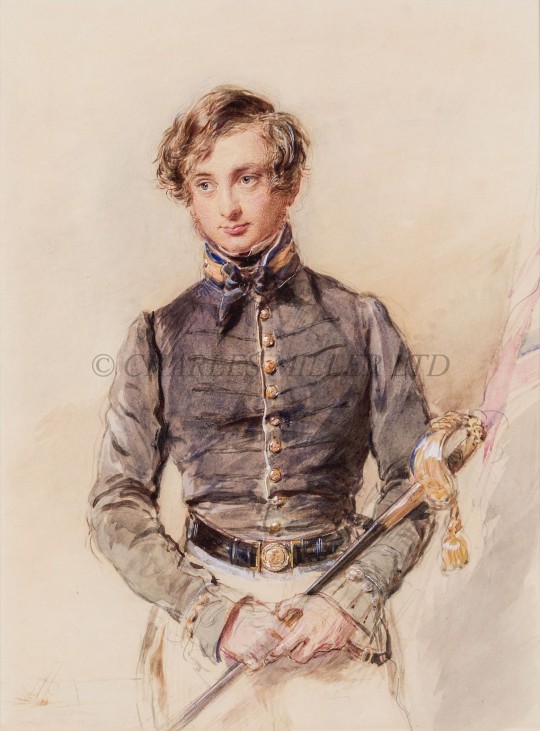
Portrait of Lieutenant Charles Robert Malden R.N. in his Midshipman uniform (1797-1855)
113 notes
·
View notes
Text
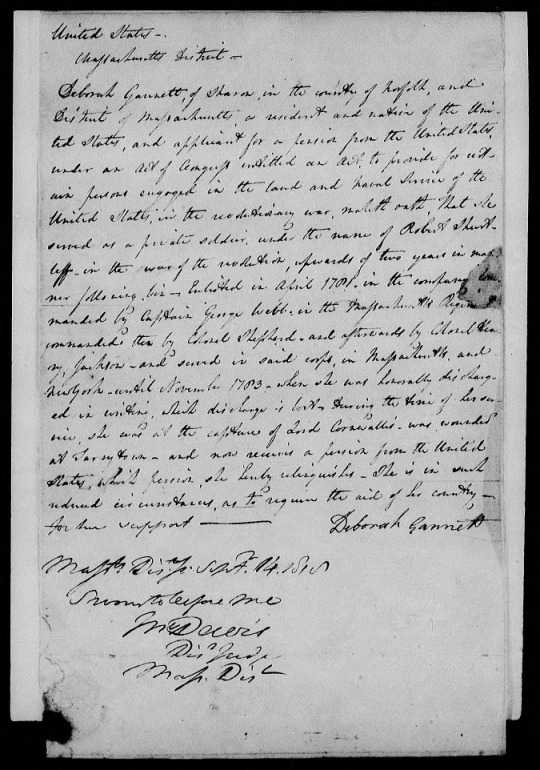
“Deborah Gannett . . . maketh oath, that she served as a private soldier, under the name of Robert Shurtliff in the war of the revolution . . .”
Pension and Bounty Land Application of Deborah (Sampson) Gannett, September 14, 1818.
Record Group 15: Records of the Department of Veterans Affairs
Series: Case Files of Pension and Bounty-Land Warrant Applications Based on Revolutionary War Service
Transcription:
United States-.
Massachusetts District
Deborah Gannett, of Sharon, in the county of Norfolk, and
District of Massachusetts, a resident and native of the United
States, and applicant for a pension from the United States
under an Act of Congress entitled an Act to provide to certain
persons engaged in the land and naval service of the
United States, in the revolutionary war, maketh oath, that she
served as a private soldier, under the name of Robert Shurtliff
in the war of the revolution, upwards of two years in manner
following vis - Enlisted in April 1781 in the company commanded
by Captain George Webb in the Massachusetts Regiment
commanded then by Colonel Shepherd, and afterwards by Colonel Henry
Jackson and served in said corps in Massachusetts, and
New York - until November 1783 - when she was honorably discharged
in writing. which discharge is lost. During the time of her service
she was at the capture of Lord Cornwallis, was wounded
at Tarrytown and now receives a pension from the United
States, which pension she hereby relinquishes. She is in such
reduced circumstance, as to require the aid of her country
for her support.
Deborah Gannett
Masstts. Dist. Septr. 14. 1818
Sworn to before me
Jno Davis
Dist. Judge
Mass. Dist.
#archivesgov#September 14#1818#1800s#American Revolution#Revolutionary War#women's history#gender#military
136 notes
·
View notes
Text
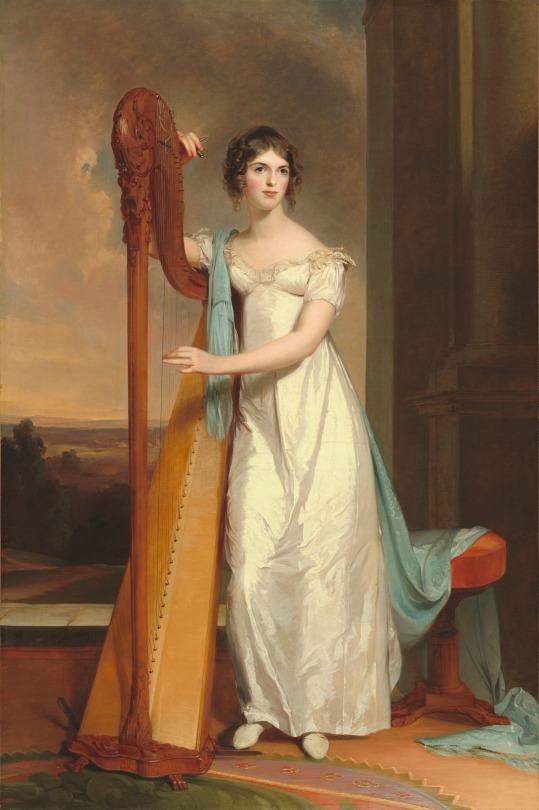
Oil painting, 1818, American.
Painted by Thomas Sully.
Portraying Eliza Ridgely in a white dress and blue shawl.
National Gallery of Art.
#Eliza ridgely#thomas sully#womenswear#dress#19th century#1818#1810s#1810s usa#1810s dress#1810s painting#white#usa#national gallery of art#nga#shawl#blue#Baltimore
36 notes
·
View notes
Text
ALL of La Fayette’s Grandchildren
(This post discusses the death and loss of children)
While four children are still pretty easy to keep track of, La Fayette’s abundance of grandchildren can be quite confusing. You often see the following graphic, published in Jules Germain Cloquet’s book:
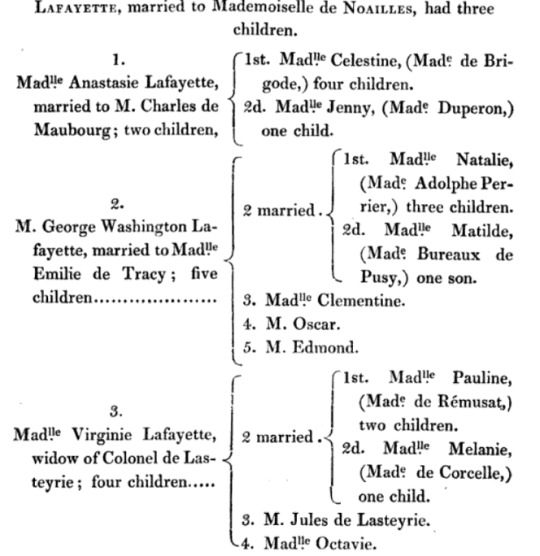
Jules Germain Cloquet, Recollections of the Private Life of General Lafayette, Baldwin and Cradock, London, 1835, p. 227.
All fine and dandy, but I was looking for more detailed information and I wanted to include the children that had already died by the time Cloquet publishes his book – I therefor made a graphic of my own. :-)
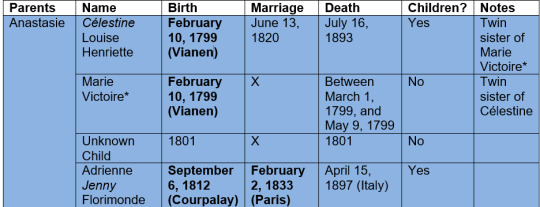
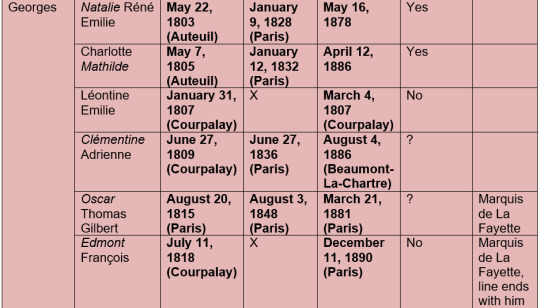
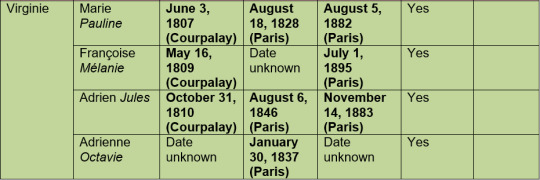
I am tempted to make one for the great-grandchildren as well, since La Fayette was very exited to become a Great-Grandfather – but this one was already a wild ride and La Fayette had more great-grandchildren then grand-children, let me tell you.
Anyway, some names are written in italics, these are the names the individuals commonly went by. I find it funny to see that all of Virginie’s children went by their second name, just like Virginie herself mostly just used her second name. Anastasie’s second child has an Asterix to her name. I have only once seen the name spelled out, on the certificate of baptism. The twins were baptized in Vianen (modern day Netherlands) and the name on the document was the Germanic spelling “Maria Victorina” – I used what I assumed is the best French spelling of the name.
The dates in bold indicate that the corresponding documentation of the birth/marriage/death can be found in the archives.
Anastasie and Charles: Finding Célestine’s dead twin sister was actually a surprise for me since I have never before seen her being mentioned. Anastasie gave birth for the first time in a town near Utrecht in what today are the Netherlands. The achieves there still have the certificate of baptism (on February 30, was the clerk sloppy or did the region in 1799 adhere to a different calendar style where February could have more then 29 days?) and we can very clearly see that there were too children. By May 9, 1799, La Fayette wrote to George Washington and referred to only one grand-child:
My wife, my daughters, and Son in law, join in presenting their affectionate respects to Mrs Washington & to you my dear g[ener]al the former is recovered & sets out for france on monday next with Virginia—our little grand Daughter [Célestine] is well, will your charming one accept our tender regard?
“To George Washington from Lafayette, 9 May 1799,” Founders Online, National Archives, https://founders.archives.gov/documents/Washington/06-04-02-0041. [Original source: The Papers of George Washington, Retirement Series, vol. 4, 20 April 1799 – 13 December 1799, ed. W. W. Abbot. Charlottesville: University Press of Virginia, 1999, pp. 54–59.] (02/12/2024)
I suspect that Anastasie had a stillbirth around August/September of 1801. La Fayette mentioned in a letter to Thomas Jefferson on June 21, 1801:
Anastasia Will Before long Make me Once More a Grand Father
“To Thomas Jefferson from Lafayette, 21 June 1801,” Founders Online, National Archives, https://founders.archives.gov/documents/Jefferson/01-34-02-0318. [Original source: The Papers of Thomas Jefferson, vol. 34, 1 May–31 July 1801, ed. Barbara B. Oberg. Princeton: Princeton University Press, 2007, pp. 403–404.] (02/12/2024)
There is no mention of this child being born and both the achieves in Paris and Courpalay yield no information so that it is unlikely that the child was born and then died young. Georges’ daughter died very young and she still is in the archives. Given La Fayette’s wording we can assume that Anastasie’s pregnancy was already somewhat advanced and the term miscarriage is only used up until the 20th week of a pregnancy, after that it is considered a stillbirth.
Georges and Emilie: The couple lost at least one daughter, Léontine Emilie, young, aged just four weeks. La Fayette wrote in a letter to Thomas Jefferson on February 20, 1807:
My family are pretty well and beg to be most affectionately respectfully and gratefully presented to you—We expected a Boy to be called after your name—But little Tommy has again proved to be a Girl [Léontine Emilie].
“To Thomas Jefferson from Marie-Joseph-Paul-Yves-Roch-Gilbert du Motier, marquis de Lafayette, 20 February 1807,” Founders Online, National Archives, https://founders.archives.gov/documents/Jefferson/99-01-02-5122. [This is an Early Access document from The Papers of Thomas Jefferson. It is not an authoritative final version.] (02/12/2024)
La Fayette later wrote to James Madison on June 10, 1807:
We Have Had the Misfortune to Loose a female Child of His, four Weeks old [Léontine Emilie]. My Younger daughter Virginia Has Lately presented us With an other infant of the Same Sex [Marie Pauline]. My Wife’s Health is Not Worse at this Moment, But Ever too Bad.
To James Madison from Marie-Adrienne-Françoise de Noailles, marquise de Lafayette, 10 June 1807,” Founders Online, National Archives, https://founders.archives.gov/documents/Madison/99-01-02-1768. [This is an Early Access document from The Papers of James Madison. It is not an authoritative final version.] (02/12/2024)
As a sidenote because it confused me while searching for the letter; the archives list Adrienne as the author. I am certain that is wrong because a) Adrienne was not corresponding with James Madison, b) this is not her writing style but La Fayette’s, c) the letter does not have her typical signature and d) there is the passage about the authors wife’s health – this one at the least gives it away.
Identifying Léontine Emilie was actually quite a bit of luck as well. I found the letter to Madison by accident and that letter is the only source that mentions her that I know of. I have never seen her in any other letters, documentation, contemporary or secondary books. The letter helped to narrow her birthday and her date of death down and with that information I searches the archives in Paris and Courpalay in the hopes of finding the child – and I was lucky. While I of course understand the order of things, it still saddens me to see that you can be born into such a prominent family – your father was a Marquis, your grand-father was the Marquis, and still, not even your families biographers care to even mention you.
Virginie und Louis: For all I know, and I again have to say that I have not nearly as much data/correspondence as I would like with regard to these topics, Virginie never lost a child. There is always the question what La Fayette would feel comfortable telling and to whom. There is also the question if La Fayette himself was always aware of everything. For example, in the case of a miscarriage very early on in the pregnancy he might have not included it in his correspondence or in fact maybe not even known himself.
As much as would wish a happy family life for Virginie, stillbirths, infant deaths and especially miscarriages were and still are not uncommon.
I have put excerpts from a few more letters by La Fayette to his American friends under the cut that help identify his grandchildren.
La Fayette to Thomas Jefferson, June 4, 1803:
I am Here, with my Wife, Son, daughter in law, and New Born little grand daughter [Natalie Renée Émilie] taking Care of my Wounds, and Stretching My Rusted Articulations untill I can Return to my Beloved Rural Abode at La Grange.
“To Thomas Jefferson from Lafayette, 4 June 1803,” Founders Online, National Archives, https://founders.archives.gov/documents/Jefferson/01-40-02-0361. [Original source: The Papers of Thomas Jefferson, vol. 40, 4 March–10 July 1803, ed. Barbara B. Oberg. Princeton: Princeton University Press, 2013, pp. 485–486.] (02/12/2024)
La Fayette to Thomas Jefferson, April 20, 1805:
Here I am with my son and daughter in law who is going to increase our family [Charlotte Mathilde]. Her father is to stand god father to the child and if He is a Boy we intend taking the liberty to give Him Your Name.
“To Thomas Jefferson from Marie-Joseph-Paul-Yves-Roch-Gilbert du Motier, marquis de Lafayette, 20 April 1805,” Founders Online, National Archives, https://founders.archives.gov/documents/Jefferson/99-01-02-1556. [This is an Early Access document from The Papers of Thomas Jefferson. It is not an authoritative final version.] (02/12/2024)
La Fayette to Thomas Jefferson, April 8, 1809:
(…) My Children are in Good Health. Two of them, My daughter in Law [Clémentine Adrienne], and Virginia [Françoise Mélanie] are Going to increase the family.
“To Thomas Jefferson from Marie-Joseph-Paul-Yves-Roch-Gilbert du Motier, marquis de Lafayette, 14 December 1822,” Founders Online, National Archives, https://founders.archives.gov/documents/Jefferson/98-01-02-3215. [This is an Early Access document from The Papers of Thomas Jefferson: Retirement Series. It is not an authoritative final version.] (02/12/2024)
#marquis de lafayette#la fayette#french history#history#letters#founders online#george washington#thomas jefferson#james madison#archieve#resources#1799#1801#1812#1803#1805#1807#1809#1815#1818#1810#georges de la fayette#anastasie de la fayette#virginie de la fayette
37 notes
·
View notes
Text

Victor Frankenstein, everyone
#this man is so fucking funny I’m so sorry but I’m crying#mary shelley#master of all genres at once#victor frankenstein#frankenstein#1818
113 notes
·
View notes
Text
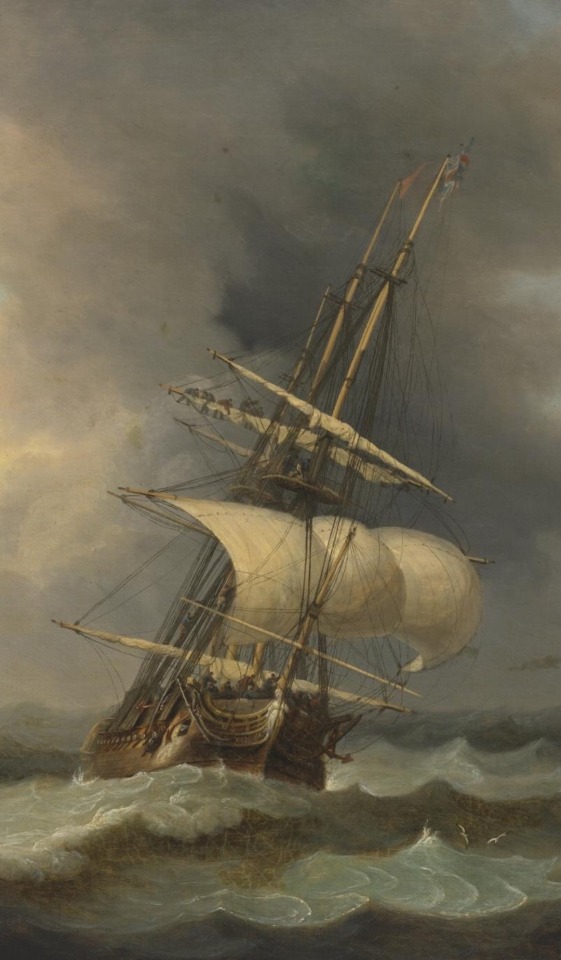
Shortening Sail Off South Foreland (detail), Thomas Luny, 1818.
54 notes
·
View notes
Text
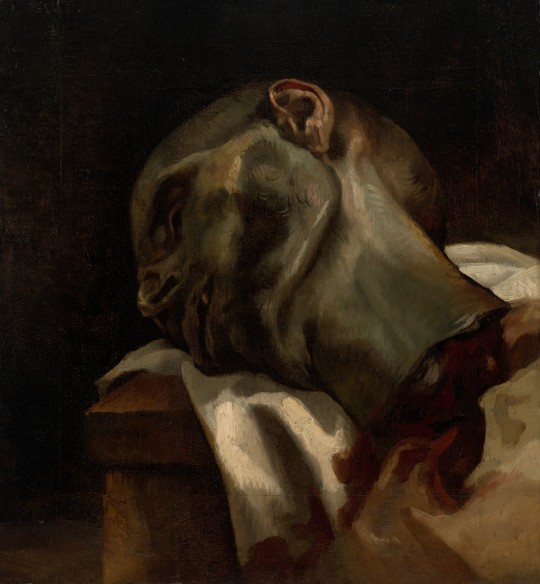
▪︎ Head of a Guillotined Man.
Artist: Jean Louis André Théodore Géricault
Date: 1818
Medium: Oil on panel
#19th century#19th century art#art#history#history of art#decorative arts#early 19th century#head of a guillotined man#1818
65 notes
·
View notes
Text

Gazebo in Greifswald (Caspar David Friedrich, 1818)
67 notes
·
View notes
Text
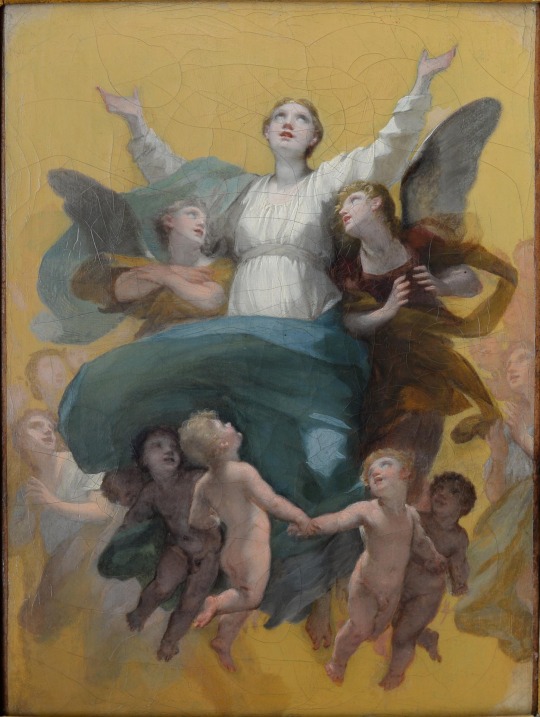
The Ascension of the Madonna, Pierre Paul Prud'hon, 1816-19
#the ascension of the madonna#pierre paul prud'hon#prud'hon#1816#1817#1818#1819#1810s#1800s#19th century#painting#art
38 notes
·
View notes
Text
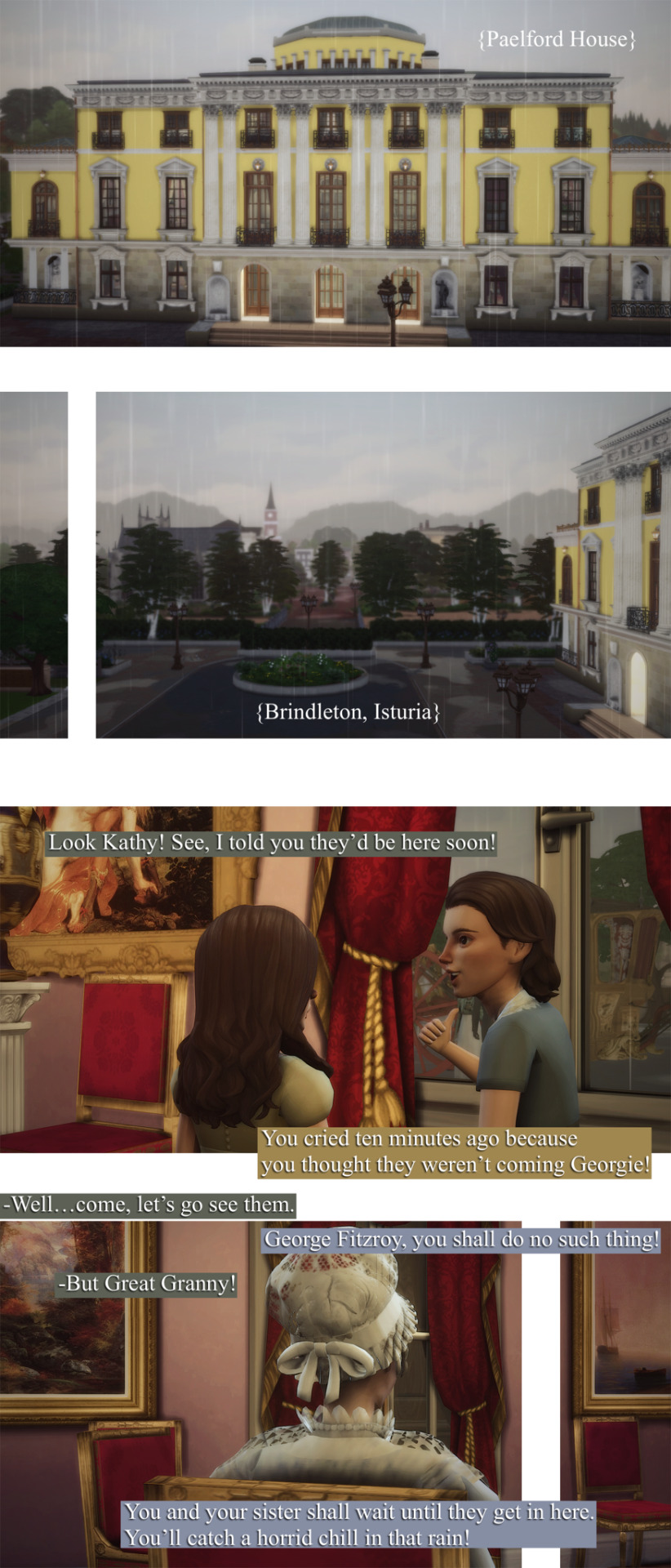


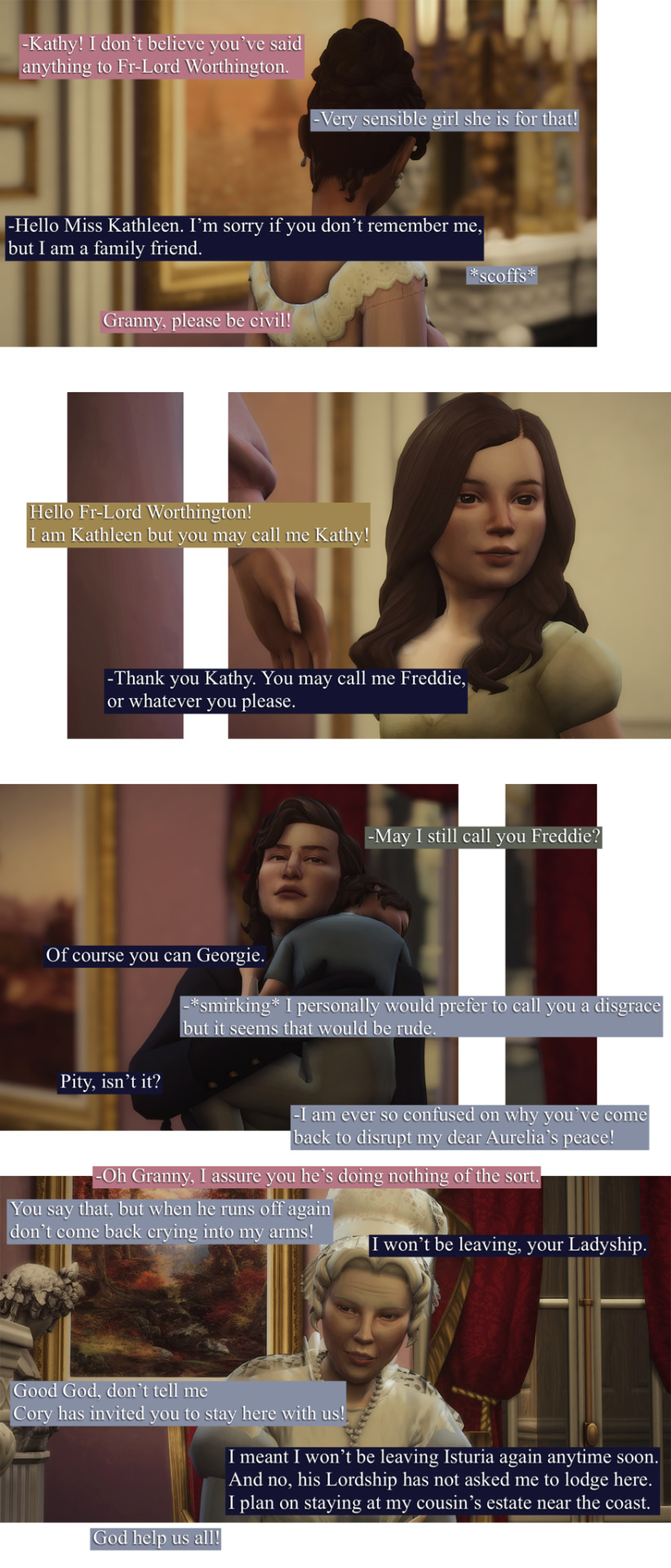





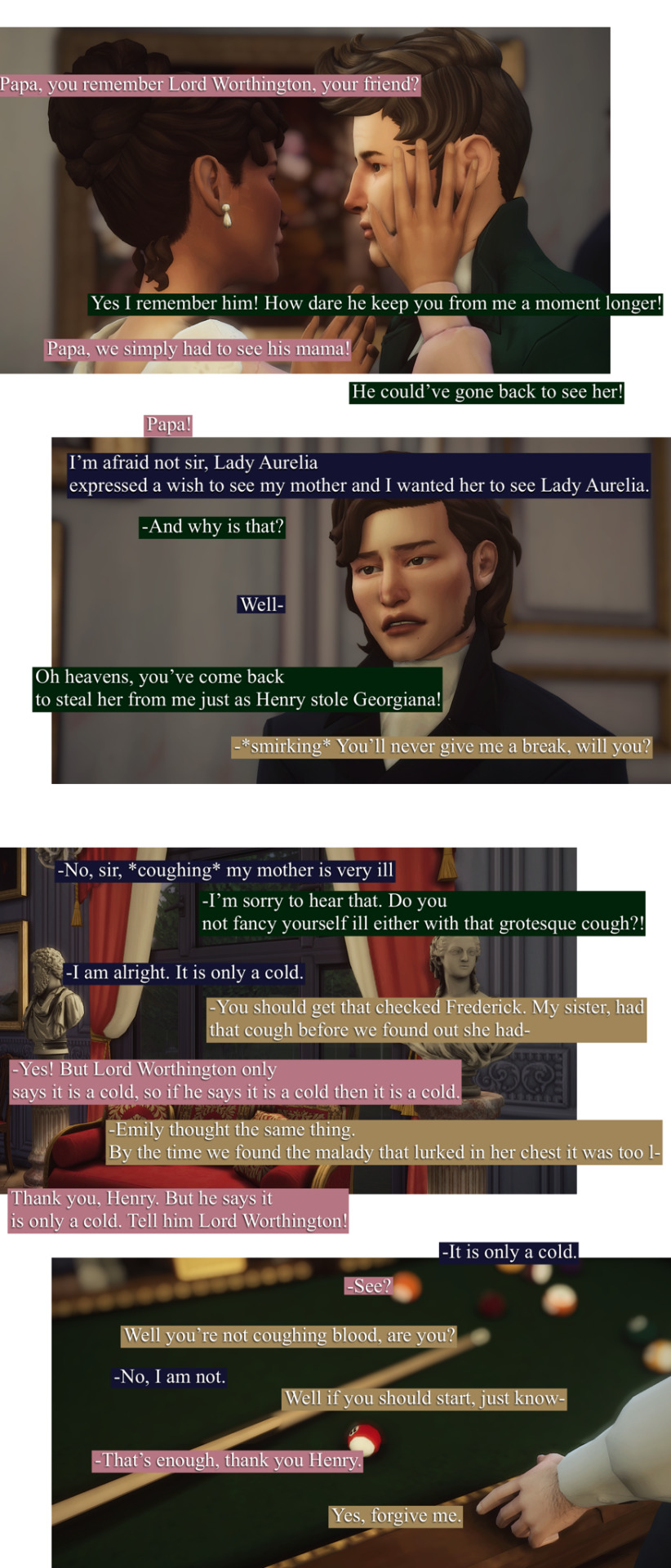


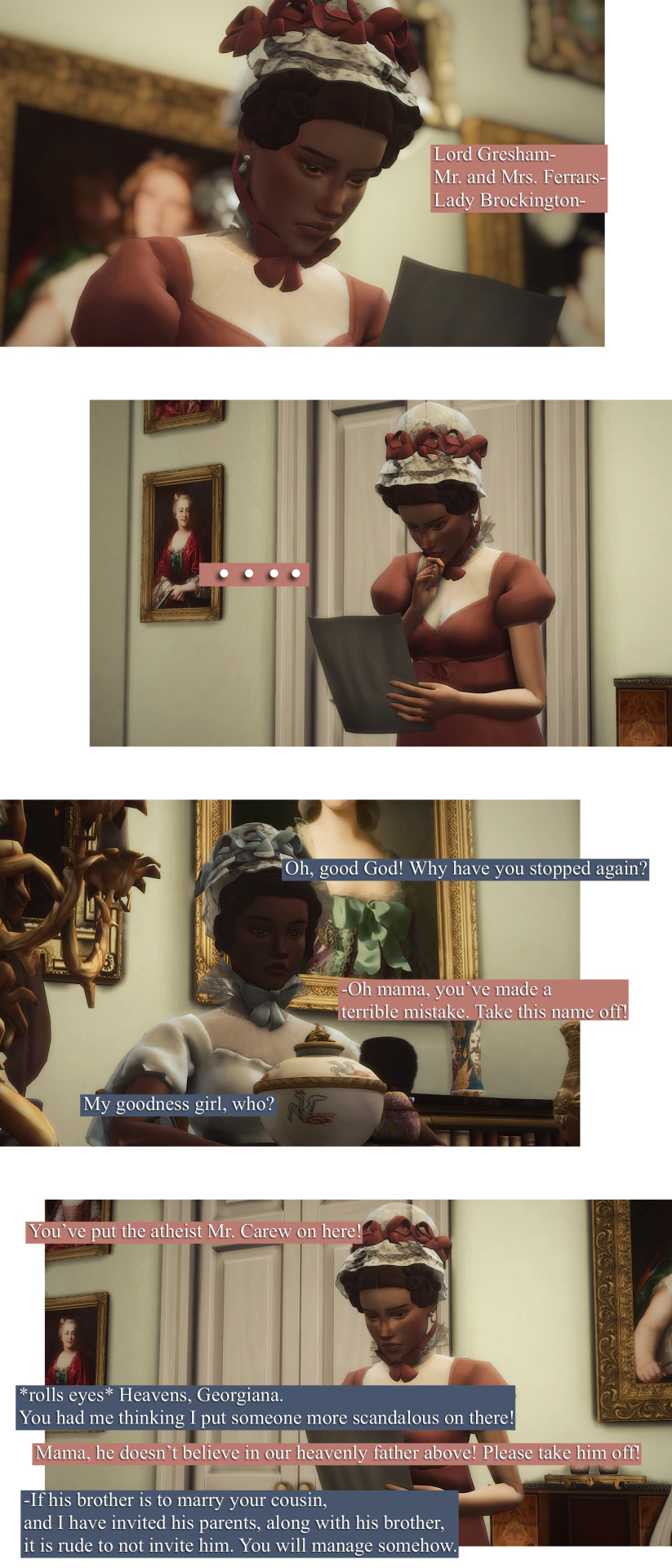





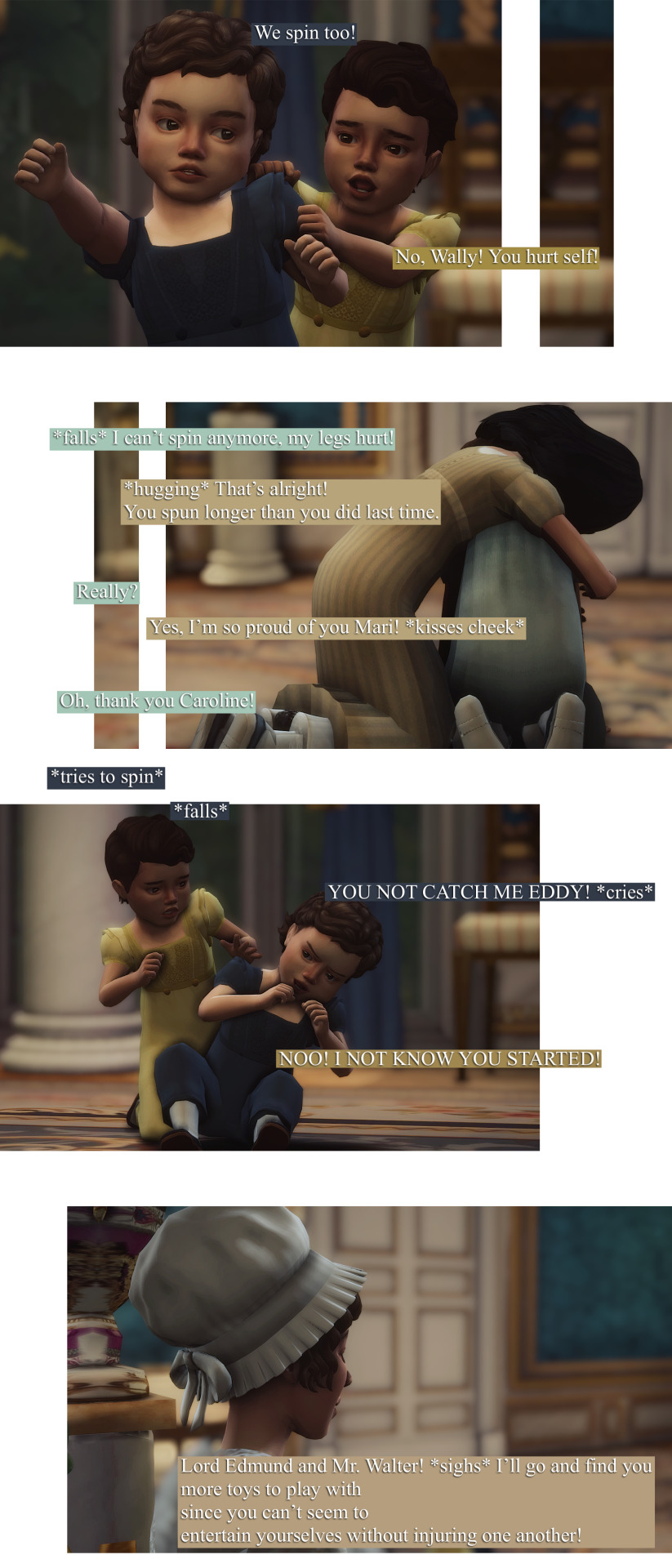
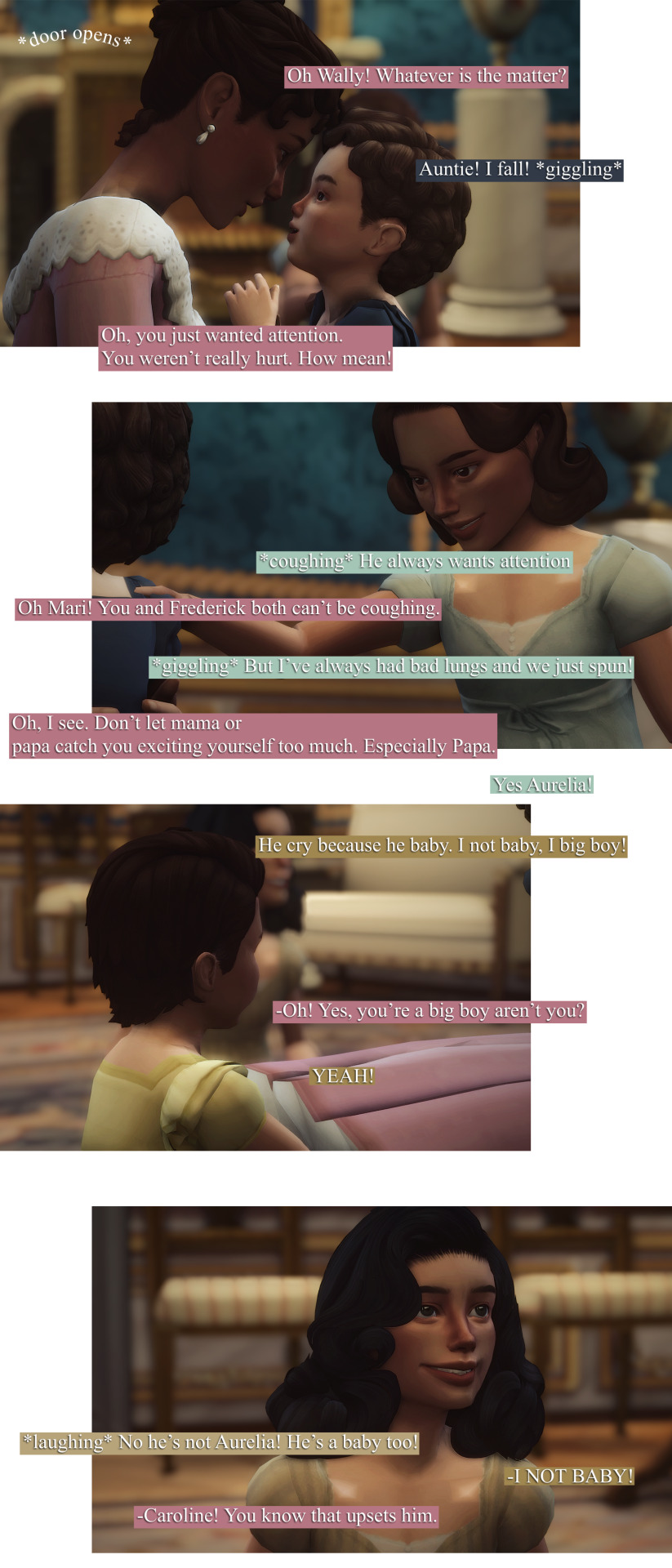

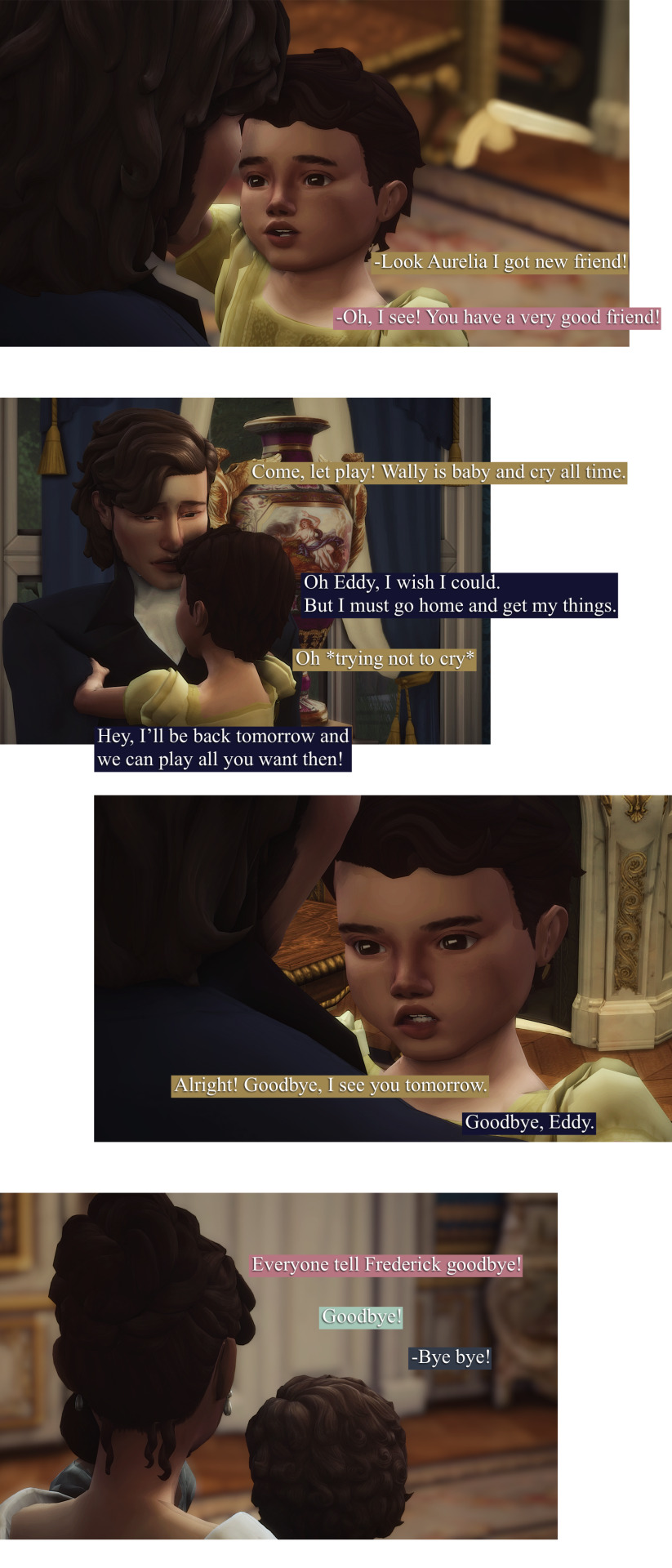


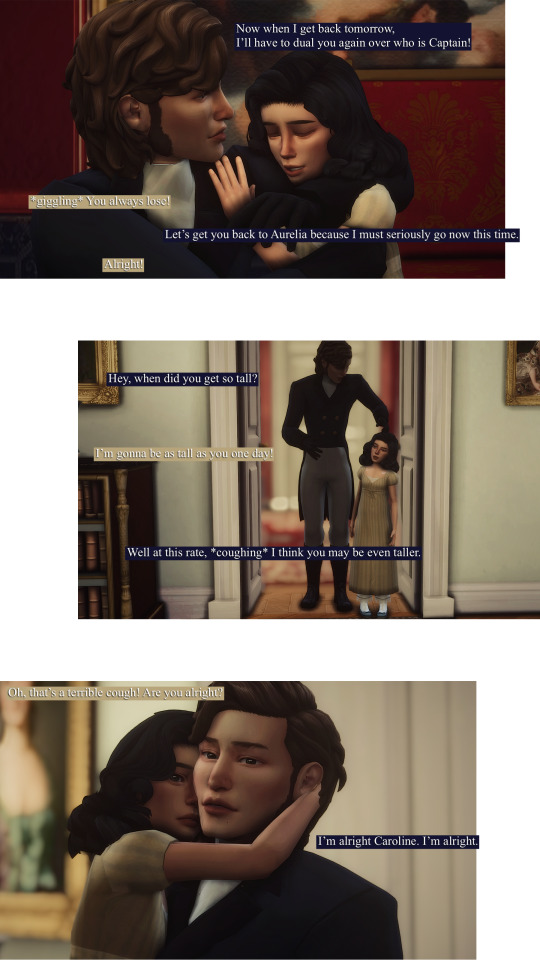

from the beginning | previous | next
#sims 4 regency#ts4 regency#sims 4 historical#regency sims 4#simblr#sims 4 regency era#regency romance#1818#sims 4 historical story#historical sims 4#TCOTD
14 notes
·
View notes
Text
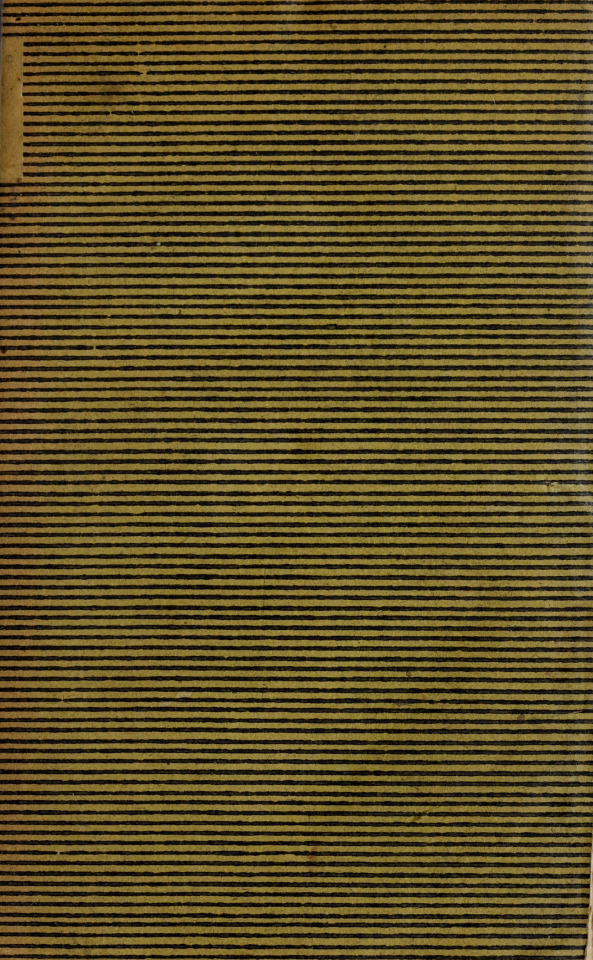
Book cover. 1818.
Internet Archive
293 notes
·
View notes
Photo

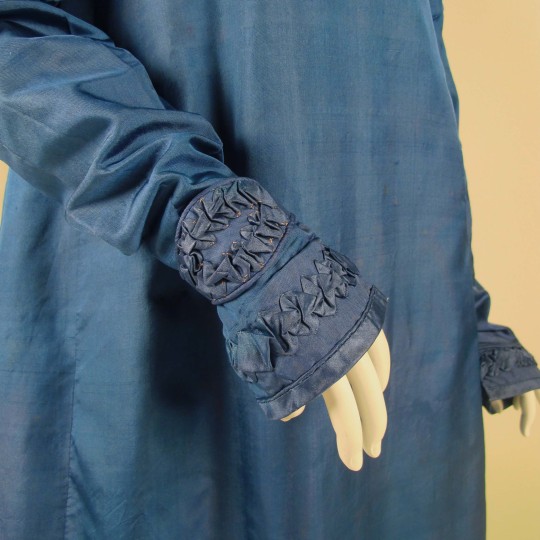

Dress
c.1818
United States
Fashions worn by American women in the early nineteenth century were directly influenced by the modish toilettes of London and Paris. American dressmakers and tailors kept up a regular correspondence with their European counterparts, disseminating news of the latest innovations to their customers.
Among the trends passed across the Atlantic from England was a preference, beginning in the fall of 1818, for a shade of marine blue favored by the Duchess of Clarence, recently married to the future William IV. London fashion magazines noted the popularity of “Clarence blue,” a pronouncement that was reprinted in American periodicals. This dress, of Clarence-blue silk twill, reveals the international influences on American fashion, in both its color and the disposition of its finely applied satin trimming.
The MET (Accession Number: 2016.181)
Currently on view: In America: An Anthology of Fashion
#dress#fashion history#historical fashion#empire era#1810s#jeffersonian era#19th century#1818#blue#silk#united states#the met#up close
395 notes
·
View notes
Photo
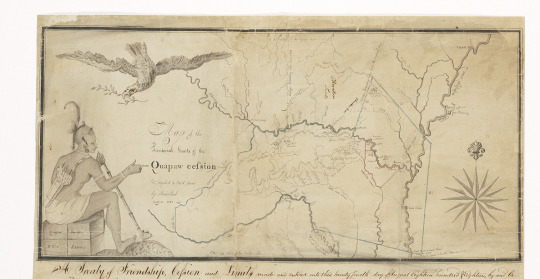

Treaty Between the United States and the Quapaw Indians Signed at St. Louis, August 24, 1818.
Record Group 11: General Records of the United States Government
Series: Indian Treaties
File Unit: Ratified Indian Treaty 96: Quapaw - St. Louis, August 24, 1818
Image description: Detailed map of the area of Arkansas River and Mississippi River, with boundaries of red and blue; with an eagle on top left carrying olive branch in its beak; a Native American with a peace pipe on the left, presumably of the Quapaw tribe, pointing to the inscription:
Map of the Territorial Limits of the Quapaw cession
Compiled & Laid down by Rene Paul
August. 1818
Transcription:
[image: Detailed map of the area of Arkansas River and Mississippi River, with boundaries of red and blue; with an eagle on top left carrying olive branch in its beak; a Native American with a peace pipe on the left, presumably of the Quapaw tribe, pointing to the inscription:
Map of the Territorial Limits of the Quapaw cession
Compiled & Laid down by Rene Paul
August. 1818]
A treaty of Friendship, Cession and Limits made and entered into this twenty fourth day of August Eighteen hundred & Eighteen, by and be-
tween [between] William Clark and Auguste Chouteau, Commissioners on the part and behalf of the United States of the one part, and the Undersigned Chiefs,
and Warriors of the Quawpaw Tribe or Nation, on the part and behalf of this said Tribe or Nation of the other part. -
Art: I: The Undersigned Chiefs and Warriors for themselves and their s'd [said] Tribe or Nation do hereby acknowledge themselves to be under the protection of the United States, and
of no other State, Power, or Sovereignty whatsoever.
Art: II: The Undersigned chiefs and Warriors, for themselves and their said Tribe or Nation do hereby, for an in consideration of the promises and stipulations herein after named, Cede
and relinquish to the United States forever, all the Lands within the following boundaries, viz: Beginning at the mouth of the Arkansas River, thence extending up the Arkan-
saw [Arkansaw] to the Canadian fork and up the Canadian fork [to its source, thence south to Big Red river and down] that river to the Big raft, Thence a direct line so as
to strike the Mississippi River, thirty Leagues in a straight line below the mouth of Arkansaw, together with all their claims to land East of the Mississippi, and north of the Ar-
kansaw river, included within the couloured lines, 1, 2, and 3 on the above map: - with the exception and reservation following: that is to say, the tract of country bounded as follows;
Beginning at a point on the Arkansaw river opposite the present post of Arkansaw, and running thence a due South West course to the Washita river, thence up that river to the
[in pencil, faint] mouth of the Saline [/] Saline fork, and up the Saline fork to a point from whence a due North East course would strike the Arkansaw river [insert] at the little rock [/] and thence down the right bank of the Arkan-
[in margin, circled] 2-9 [/] saw to the place of beginning, which S'd [said] tract of land, last above designated and reserved, shall be surveyed and marked off, at the Expense of the United States, as
any State or Nation, without the approbation of the United States, first had and obtained.
Art III; It is agreed between the United States, and the said Tribe, or Nation, that the individuals of the S'd [said]Tribe or Nation shall be at liberty to hunt within the Territory by them
ceded to the United States, without hindrance or molestation so long as they demean themselves peacefully and offer no injury or annoyance to any of the citizens of the United
States, and until the S'd [said] United States may think proper to assign the Same, or any same or any portion thereof, as hunting grounds to other friendly indians.
Art IV; No Citizen of the United States, or any other person shall be permitted to settle on any of the lands hereby allotted to and reserved for the S'd [said] Quawpaw Tribe, or Nation, to live and
hunt on; Yet, it is expressly understood and agreed on by and between the parties aforesaid, that at all times the citizens of the United States, shall have the right to travel
and pass freely without toll or exaction through the Quawpaw reservation, by such roads or routes as now are, or hereafter may be, established.
Art V; In consideration of the cession and stipulations aforesaid the United States do hereby promise, and bind themselves to pay and deliver to the s'd [said] Quawpaw Tribe, or Nation, immediately
upon the execution of this Treaty, Goods and Merchandise to the value of Four Thousand Dollars, and to deliver, or cause to be delivered to them yearly, and every year, Goods and Mer-
chandise [merchandise] to the value of One Thousand Dollars to be estimated in the city, or place in the United States, where the same are procured, or purchased.
Art VI; Least the friendship which now exists between the United States, and the Said Tribe, or Nation should be interrupted by the misconduct of individuals, it is hereby agreed, that
for injuries done by individuals, no private revenge, or retaliation shall take place, but instead thereof, complaints shall be made by the party injured to the other. - By the Tribe, or
nation aforesaid, to the Governor, Superintendant of Indian Affairs, or some other person, authorized or appointed for that purpose, and by the Governor, Superintendent, or other person authorized
to the [crossed out] said [/] Chiefs of the S'd [said] Tribe, or Nation. And it shall be the duty of the Said Tribe or Nation, upon complaint being made as aforesaid, to deliver up the person or persons against whom the complaint is made, to the end that he or they may be punished agreeably to the Laws of the State or Territory where thee offence may have been committed; And in like manner, if any robbery,
violence, or murder, shall be committed on any indian, or Indians belonging to the Said Tribe, or Nation, the person, or persons so offending shall be tried, and if found guilty,
punished in like manner as if the injury had been done to a white man._ And it is further agreed that the chiefs of the said Tribe or Nation shall to the utmost of their power
exert themselves to recover horses or other property which may be Stolen from any citizen or citizens of the United States, by any individual or individuals of the Said Tribe, or
Nation, and the property so recovered shall be forthwith delivered to the Governor, Superintendent, or other person authorized to receive the same, that it may be restored
to the proper owner. And in cases where the exertions of the Chiefs shall be ineffectual in recovering the property stolen, as aforesaid, if sufficient proof can be obtain-
ed [obtained], that such property was actually stolen by an indian, or indians belonging to the Said Tribe, or Nation, a sum equal to the value of the property which has been stolen, may
be deducted by the United States from the Annuity of S'd [said] Tribe or Nation. And the United States hereby guarantee to the individuals of the Said Tribe, or Nation
a full indemnification for any horse, or horses, or other property which may be taken from [insert] them [/] by any of their citizens; Provided, the property so stolen cannot be recovered, and
that sufficient proof is produced that it may actually stolen by a citizen or citizens of the United States.
Art VII; This Treaty shall take effect and be obligatory on the contracting parties, as soon as the same shall have been ratified by the President of the United States,
by and with the advice and consent of the Senate.
[left column]
Done at St Louis in the presence of
[signed] R. Wash Secretary to the Commission
[signed] R. Paul Col. M. M.
C. I.
[signed] Jn Ruland Sub Agent & c
[signed] R Graham Ind Agt
[signed] M Lewis Clark
[signed] J. T. Honore Ind Intpr
[signed] Joseph Bonne Interpreter
[signed] Julius Pescay
[signed] Stephen Julian, U.S. indn interpt.
[signed] James Loper
[signed] William P Clark
[middle column]
[signed] Wm Clark
[signed] Aug. Chouteau [seal]
Kra-ka-ton, or }
the dry man } his + mark [seal]
Hra-da-paa, or }
the Eagles Bill } his + mark [seal]
Ma-hra-ka, }
or Buck Wheat } his + mark [seal]
Hon-ka-daq-ni his + mark [seal]
Wa-gon-ka-datton his + mark [seal]
Hra-das-ka-mon-mini, }
or the Pipe Bird } his + mark [seal]
Pa tonq di, or the }
approaching Summer } his + mark [seal]
Te hon ka, or the }
Tame Buffaloe } his + mark [seal]
[right column]
Ha-mon-mini }
or the night walker } his + mark [seal]
Washing-tete-ton }
or mocking bird bill } his + mark [seal]
Hon-te-ka-ni his + mark [seal]
Ta-ta-on-sa or }
the whistling wind } his + mark [seal]
Mozate te } his + mark [seal]
#archivesgov#August 24#1818#1800s#Native American history#American Indian history#Indigenous American history#Quapaw#Indian treaties
76 notes
·
View notes
Text
Darkness had no effect upon my fancy, and a churchyard was to me merely the receptacle of bodies deprived of life, which, from being the seat of beauty and strength, had become food for the worm.
FRANKENSTEIN, Chapter 4
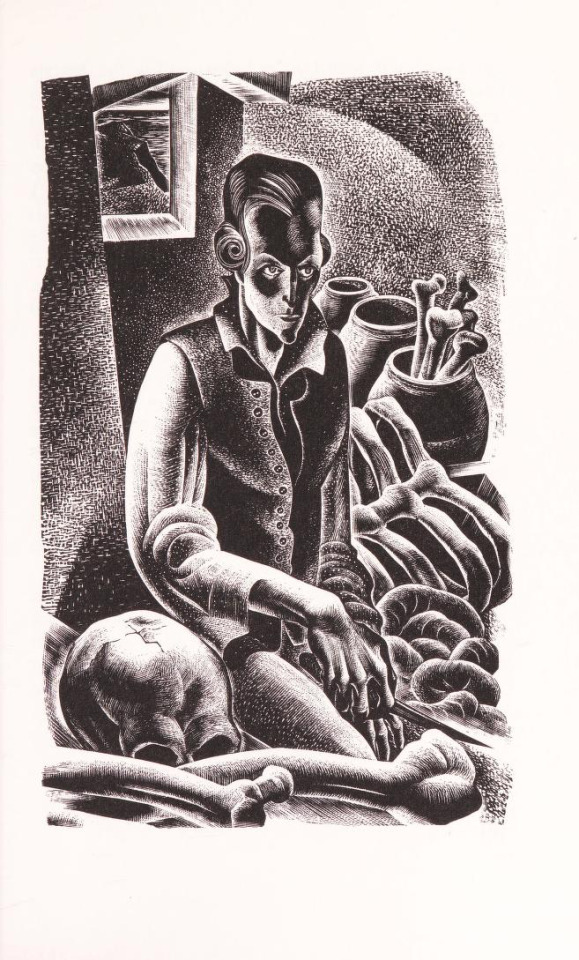
FRANKENSTEIN by Mary Wollstonecraft Shelley, illustrated by Lynd Ward - 1988
Source: Archive.org
#frankenstein#frankenstiensmonster#mary shelly's frankenstein#mary shelley#wollstonecrafting#Frankenstein quotes#gothic#gothic writing#classical romance#lynd ward#frankenstein illustrated#macabre illustrations#1818#1988
8 notes
·
View notes
Text
“‘Cursed Creator! Why did you form a monster so hideous that even you turned away from me in disgust? God in pity made man beautiful and alluring, after his own image; but my form is a filthy type of your’s, more horrid from its very resemblance. Satan has his companions, fellow-devils, to admire and encourage him; but I am solitary and detested.’”
Frankenstein; Mary Shelley
Page: 133
1818 text
#frankenstein#frankensteins monster#frankensteins creature#the creature#classic literature#gothic literature#mary shelley#currently reading#bookblr#frankenstein 1818 text#1818#frankenstein 1818
8 notes
·
View notes